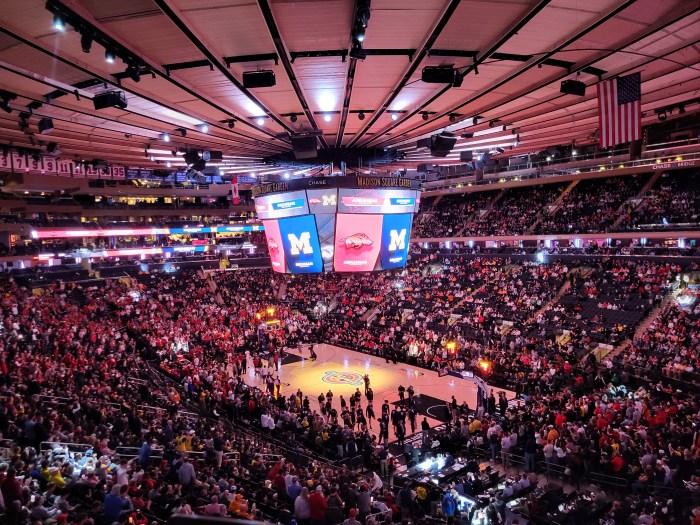BY CARY ABRAMS | The Hotel Chelsea, constructed over a roughly two-year period between 1883 and 1884, was founded on the principles of Charles Fourier, a 19th-century French philosopher. Fourier espoused the utopian ideas of creating a cooperative community on the ideals of trust, caring and mutual support among its members. A hotel guest who sat in the hotel lobby or rode one of it elevators might have appreciated Fourier’s inspiration, though unaware of his existence. Though lacking such a well-defined set of philosophical beliefs, Stanley Bard, whose father bought an ownership stake in the hotel in 1947, was a major influence in continuing Fourier’s legacy at the hotel. Under Bard, the hotel further increased its reputation as a bohemian refuge, a place where artists and creative types flocked to, congregated within, lived their lives, created masterpieces and formed a family of sorts. The rows of brass plaques gracing the hotel’s entrance honoring celebrated former residents attest to this fact.
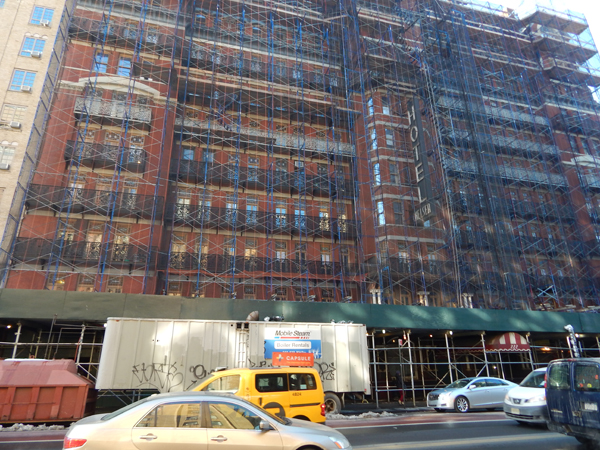
Bard began working at the hotel as a plumber’s assistant in 1957, and assumed the reins as manager and part owner in 1964 when his father died. Over the next 40-plus years, Bard managed to create a truly unique venue, unlike any other in America. He supported the creative types who flocked to the hotel, be they guests or those who chose to make the place their permanent home. Many artists describe how Stanley Bard allowed them to stay on, even as the amount of rent they owed grew. The hotel’s lobby and walls became a gallery of artwork traded for back rent, bartered or given to Bard out of love and generosity by resident artists. In a shocking coup of sorts, minority co-owners ousted the Bard family from their management role on June 20, 2007. Ira Drukier of BD Hotels, who was part of the group unseating Bard, remarked that, “with a little work, the Chelsea can once again become a crown jewel of New York City.” The last 12 years have witnessed an epic struggle, a fable of the forces struggling in the transformation taking place in New York City. The twists and vagaries that have transpired over the past 12 years are worthy of a book, are far too detailed and involved to relate in an article. Yet, suffice it to say that tenants’ and owners’ lives have been transformed through the ordeal.
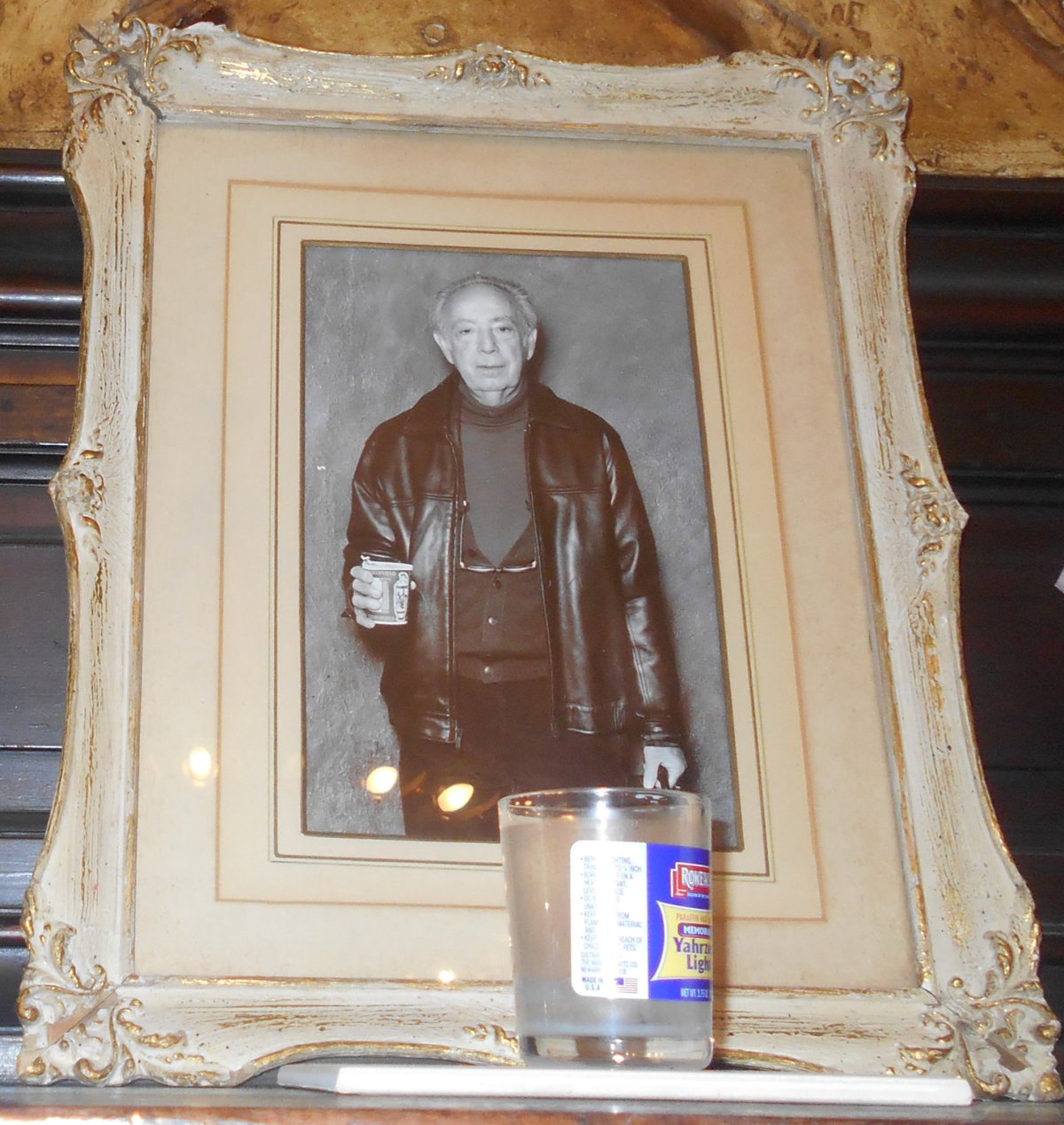
Certainly, the new owners imagined they would be able to clean house, rapidly evict the many long-term tenants who made the hotel their home, quickly renovate the building, and capitalize on its cultural cachet and historic significance. Yet, the tenants banded together, organized, retained legal representation, and ultimately won their right to remain in their homes under the New York State tenants’ rights laws. The owners have struggled, as well, with ownership changing hands three times during the dozen years. Cost overruns, work stoppages, lengthy delays, and the fact that the hotel remains occupied have made the renovation process appear endless. More than 40 tenants have remained. They say they have survived through more than a decade of harassment, along with uncertainty as to their status, noise, dust, pollution, mice, leaks, loss of electricity, floods, lack of elevator service and possible asbestos exposure. Against all odds, they endure. On July 30, 2011, guests were informed the hotel would be closed for a year for renovation. Eight years later, the building’s facade remains clad in scaffolding, as renovation continues. Declared a New York City landmark in 1966, and added to the National Register of Historic Places in 1977, the distinctive Victorian Gothic, red-brick facade with flower-ornamented iron balconies is protected, while jackhammers wreak havoc within. The long-awaited early-2019 promised hotel reopening date has come and passed. Certainly, the owners hope to capitalize on the hotel’s magical name, its cachet, its power as a place where so many works of genius were created. Jim Georgiou, a former resident of the hotel who was evicted when the new owners assumed the reins, presciently realized this fact, when he astutely preserved 52 doors from hotel rooms that were being discarded in dumpsters outside the hotel. Georgiou convinced Guernsey’s Auction Gallery of the importance of these artifacts, and individual doors sold for up to $100,000 at their May 2018 auction, which drew worldwide attention. Georgiou is a passionate advocate for the history of the hotel, as he speaks eloquently on the sense of love, trust and community he experienced while living at the hotel.
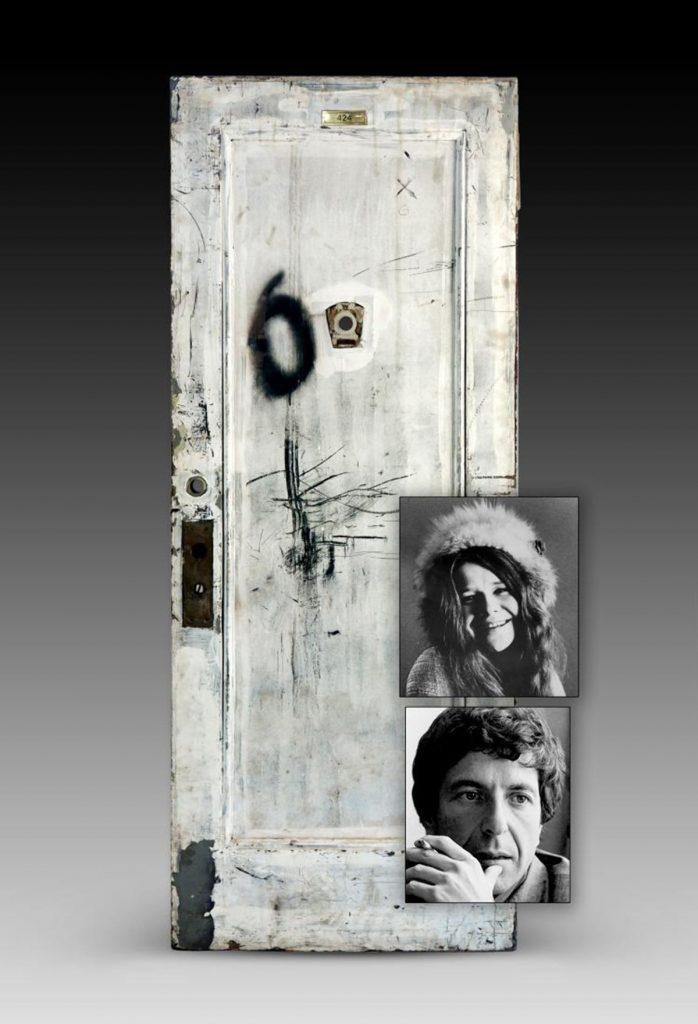
Georgiou donated half of his proceeds from the auction to City Harvest. His life goes on much the same as before the auction, as he continues to sell records at an indoor location on W. 16th St. The current owners would do well to hire him as an in-house historian, to provide tours of the hotel and deepen guests’ appreciation of the place. The hotel’s attraction was made vividly clear to me recently as I asked a young woman who was studying the plaques outside the building what brought her there. A noted young British actress, she explained that the Hotel Chelsea is a place she often makes a pilgrimage to when she is in New York, “to muster something, feel something of its power.” In speaking to tenants for this article, I sensed a kind of weariness. Fatigue has set in among them, which is understandable. Perhaps the tenants and current owners have struck a kind of truce, accepting the hotel’s transformation, its next incarnation. One long-term tenant, a writer and curator, when asked about the current status of the hotel, responded, “I no longer discuss the Chelsea Hotel.” The renowned artist Phillip Taaffe, his wife, Gretchen Carlson, and their children remain in their ninth-floor apartment, the same one that was noted composer Virgil Thompson’s home from 1940 until his death in 1989. One of the few apartments not chopped up into smaller units during the Depression, it stands as a relic of the hotel’s former grandeur, with much of its original architectural detail still in place. Suzanne Lipschutz, a famed decorator and antiques dealer, a.k.a. Second Hand Rose, faced the daunting task of moving apartments to facilitate the renovation. Her unique wallpaper-decorated home disappeared, as she began working her magic anew in her new space.
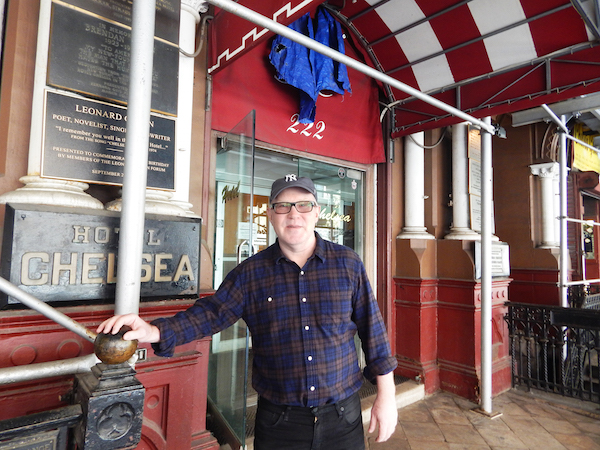
Ed Hamilton is the in-house Chelsea Hotel chronicler, who maintains the informative blog Living With Legends. The blog provides a daily record of people and events at the hotel. Hamilton also wrote a book-length history of the hotel, “Legends of the Chelsea Hotel.” He continues to live there with his wife, Debbie Martin, in the 220-square-foot S.R.O. (single-room occupancy) unit, without a kitchen — they share a hall toilet — that they first moved into in 1995. And Lola Schnabel remains in the apartment first rented by her father, noted artist Julian Schnabel. Passionate Chelsea Hotel advocate Artie Nash remains in Room 205, Dylan Thomas’s former home when in New York. A sign on his window facing W. 23rd St. still proclaims, “Bring Back the Bards.” Stanley Bard’s art collection, including work by Christo, Larry Rivers, Phillip Taaffe and Tom Wesselman, was auctioned in May 2017. Sadly, Bard died in February 2017, in Florida, far from the hotel he lovingly managed. The New York Times obituary hailed him as “a Robin Hood of innkeepers who nurtured writers and artists and tolerated assorted deadbeats.” Surely, those days are gone. Yet, the current owners promise to return the artwork that once graced the hotel walls, and promise to honor the hotel’s vaunted history. There are hopeful signs that the current owners have learned from past mistakes and their rough-handed tactics. For one, Dan Courtenay, who runs Chelsea Guitars — a mainstay, occupying one of the hotel’s storefronts for nearly 30 years — has been allowed to remain. And a friend related that the room where Vali Myers, the noted Australian visionary artist who lived at the hotel part of each year, would be allowed to remain as a shrine of sorts to her, as she had left it at her death in 2003.

Meanwhile, longtime tenants anxiously await the completion of construction, and being able to resume a more “normal” existence, hopeful the place doesn’t evolve into a Disneyfied circuslike atmosphere. They fought the owners’ attempt to establish a rooftop bar. El Quijote, the well-known ground-floor Spanish restaurant, which had operated in the hotel for 80 years and closed last year, is slated to reopen. The current team of owners, Richard Born, Ira Drukier and Sean Macpherson, appear intent on completing the renovation and reopening the hotel. Clearly, though, the heyday of the Chelsea Hotel being a bohemian enclave that attracted legions has ended. What it will evolve into remains open to question. Certainly, the marketing efforts will look to capitalize on the hotel’s rich past. In our celebrity-conscious age, surely, many will seek to bed down in the room where Dylan wrote “Sad-Eyed Lady of the Lowlands,” the fabled bed where Leonard Cohen had his tryst with Janis Joplin, the space where Andy Warhol filmed “The Chelsea Girls.” The more macabre types will request the suite where Sid Vicious secured his place in infamy. Whether these artists’ spirits will be present, or have been chased off by the din of jackhammers and clouds of dust, remains to be determined. Certainly, the presence of the remaining long-term hotel tenants will do much to ensure some connection to the hotel’s storied past.
Read more: Brooklyn Woman Killed in Domestic Dispute, NYPD Investigates





























